Dubai Part II
Troy and I met at the airport and headed to Beirut. Because of the unrest in Syria, our flight took a little longer. It did not fly over, but around Syria.
Khaled (our guide for a few days) met us at the airport and drove us to the Radisson Blu for the first three nights. The next morning Khaled picked us up and headed out to see Lebanon. He stopped to show us some very old monuments on the side of the road that were placed there when Countries in the past had conquered the area. Beirut is an old city with a lot of history. There is evidence of war in many of the buildings appearances.
Our next stop was 18 km north of Beirut at the Jeita Grotto. He wanted to get there before the school children did. We took a cable car to the upper Grotto. It was discovered in 1836 by an American Missionary and opened to the public in 1969. It's total length is 2200m. We walked through 700m of the enormous cavern and it was very serene without school children. We saw extraordinary stone forms of curtains,
Danni Brennan
23 chapters
Play & Work in Beirut
May 19, 2017
|
Beirut, Lebanon
Troy and I met at the airport and headed to Beirut. Because of the unrest in Syria, our flight took a little longer. It did not fly over, but around Syria.
Khaled (our guide for a few days) met us at the airport and drove us to the Radisson Blu for the first three nights. The next morning Khaled picked us up and headed out to see Lebanon. He stopped to show us some very old monuments on the side of the road that were placed there when Countries in the past had conquered the area. Beirut is an old city with a lot of history. There is evidence of war in many of the buildings appearances.
Our next stop was 18 km north of Beirut at the Jeita Grotto. He wanted to get there before the school children did. We took a cable car to the upper Grotto. It was discovered in 1836 by an American Missionary and opened to the public in 1969. It's total length is 2200m. We walked through 700m of the enormous cavern and it was very serene without school children. We saw extraordinary stone forms of curtains,
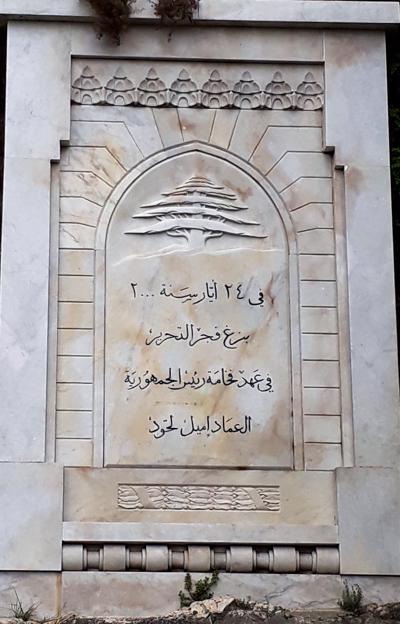
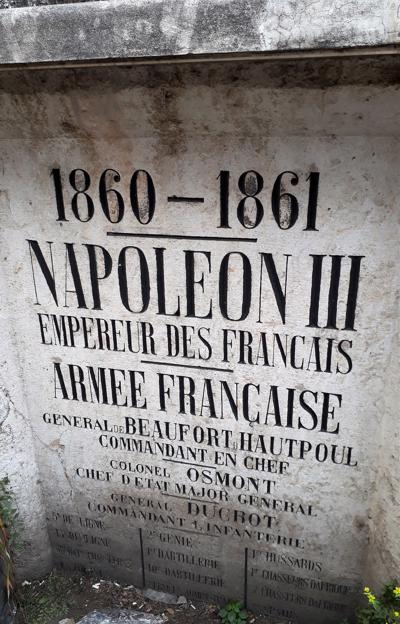
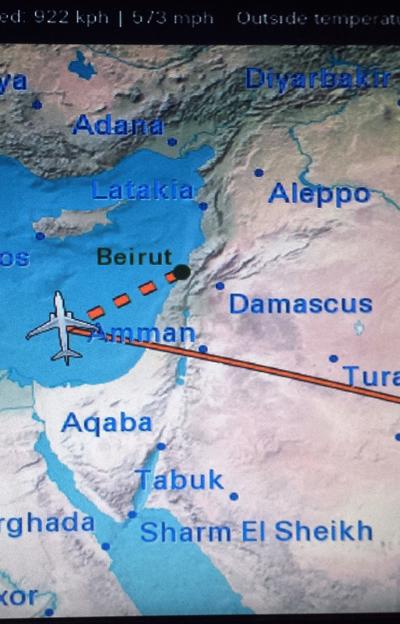
columns, draperies and mushrooms formed by drops of water over a million years. As we were leaving a group of school children came in and our peaceful walk came to an end.
We then got on the train that took us to the lower grotto. This part opened to the public in 1958. We got on a small electric motorboat and took a little cruise 400m into the cave. The total length is 7800m. The water is very clear and drips fall on your head throughout the visit. One of the longest stalactites in the world is in the upper grotto. It measures 8.2m. The distance from the ceiling in the upper grotto to the water level in the lower reaches 108m where a 32 story building could be fitted.
This Grotto was beautiful and has been given many awards for tourism.
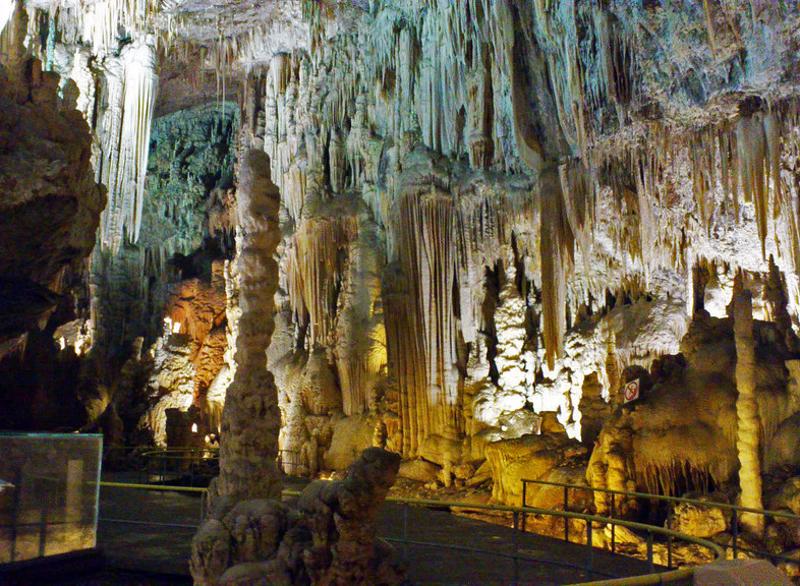
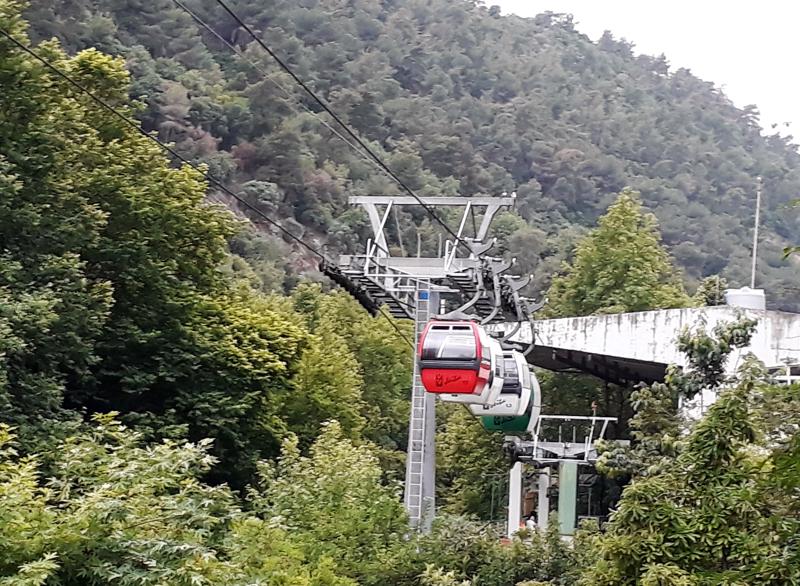
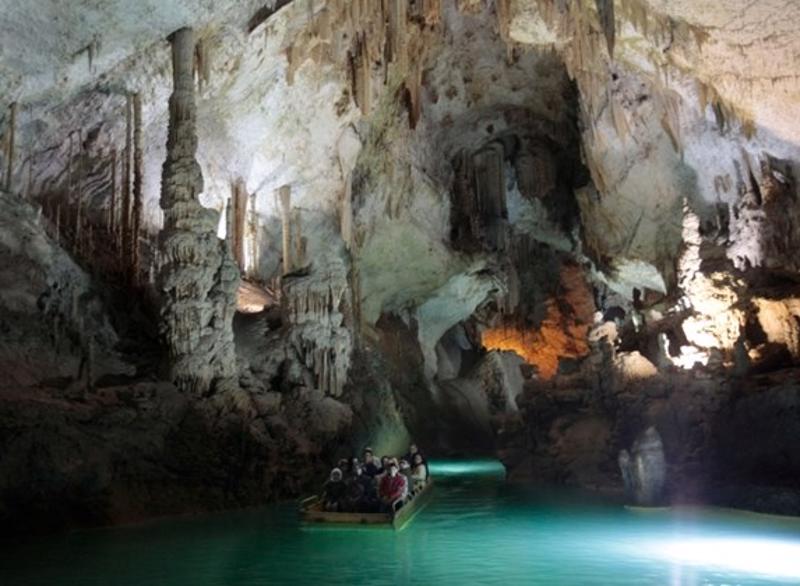
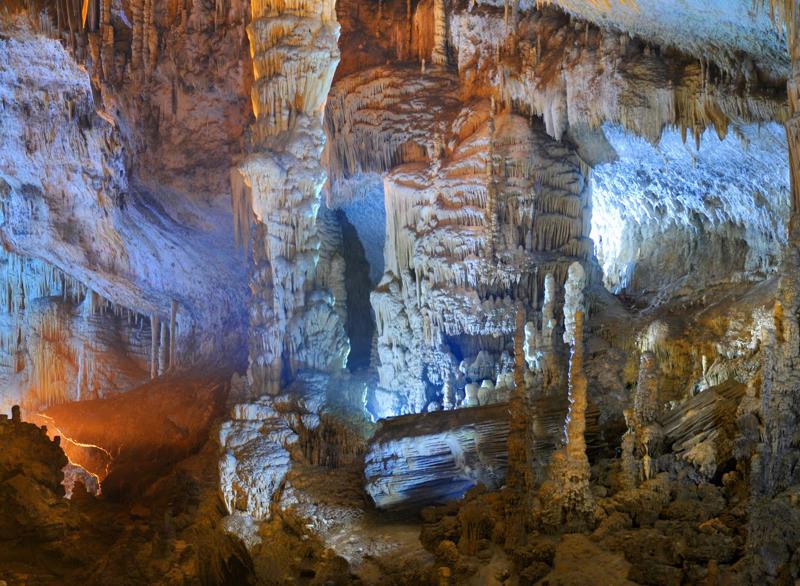
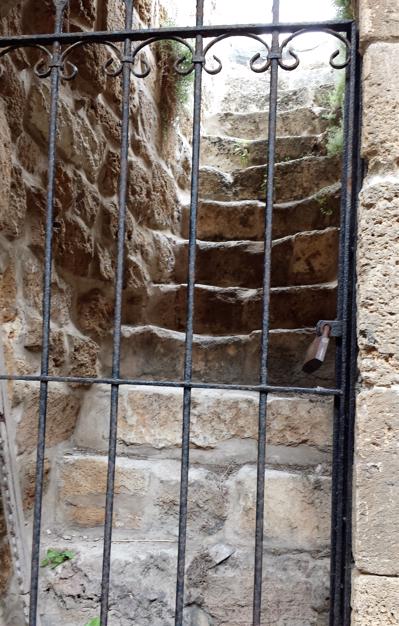
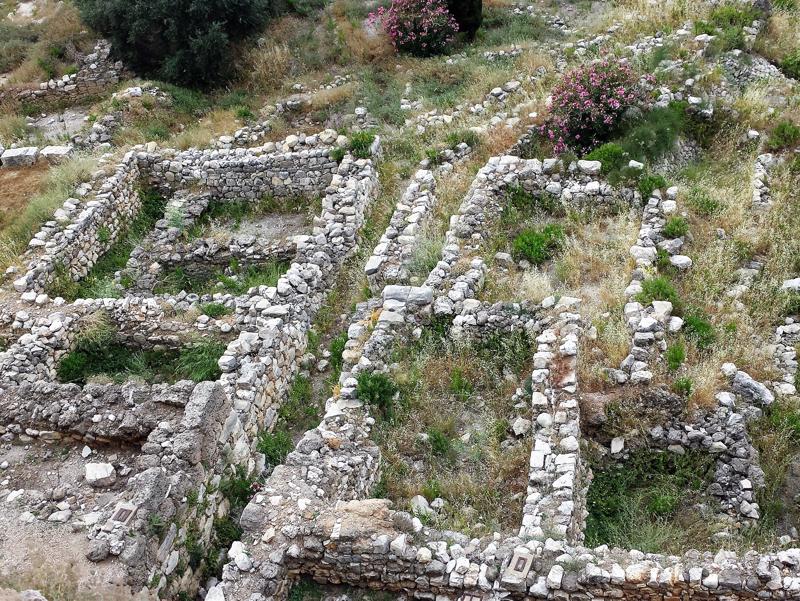
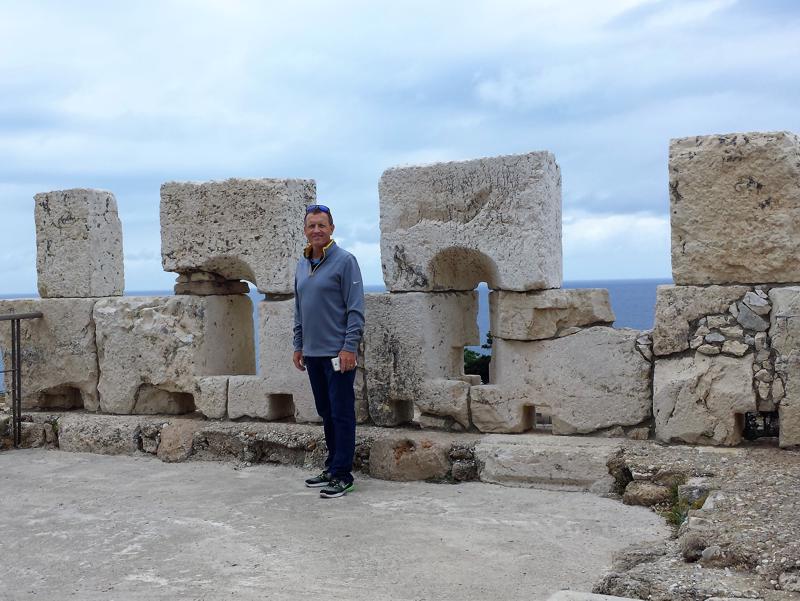
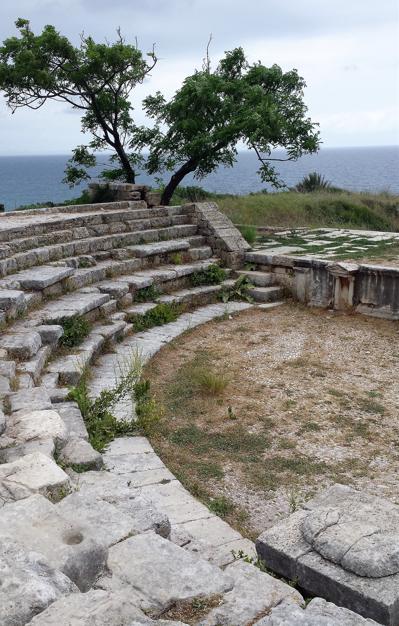
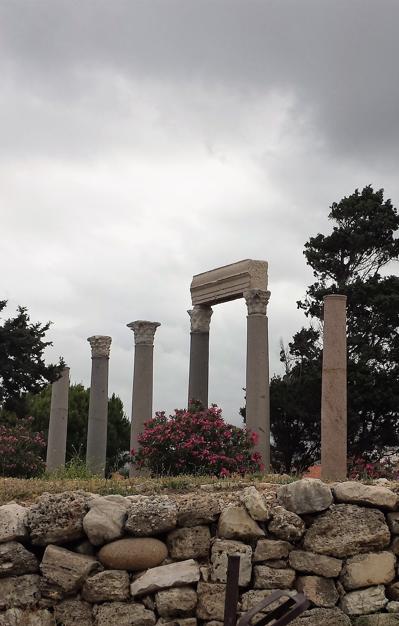
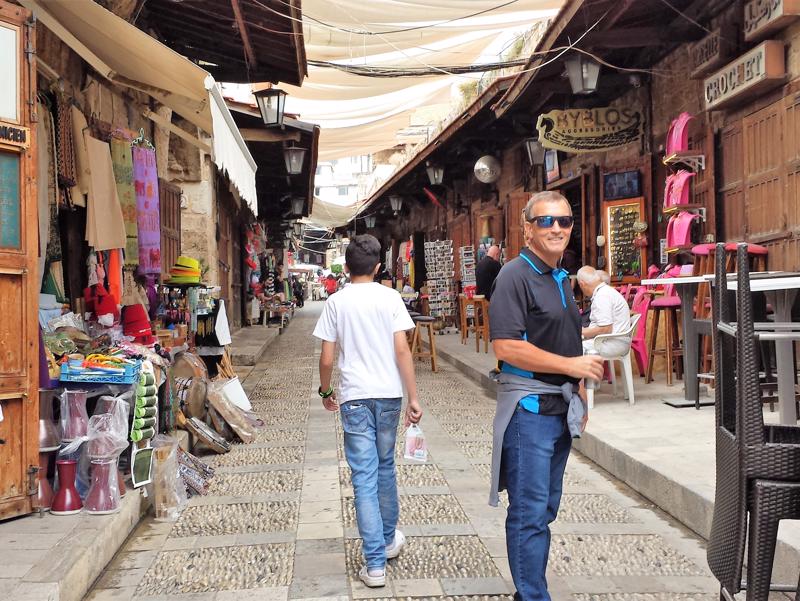
Khaled drove about 42km north of Beirut to Byblos. It is believed to have been occupied first between 8800 & 7000BC. It is the oldest continuously inhabited city in the world. This site has been inhabited since 5000BC. Ultimately the word bible derives from the name Byblos. The 1st linear alphabet in Greek and Latin was invented. The site was 1st excavated in 1921 for 40 years. During 3rd millennium BC the 1st signs of town can be observed. This was the period when the Canaanite civilization began to develop. We met a very nice couple also from Dubai. They had just finished a tour of the Grotto also.
We had time to walk around the historic quarters & souks before Khaled took us to lunch at Manuela's. This was an experience in itself. He warned us that we would get a lot of food. The couple from Dubai were also there with a table full of food. We ordered shrimp and they brought everything else. We were served bread, pickles, dates, nuts, almonds, pea pods, and peppers. When our shrimp was served we were already full. After our shrimp, they brought out the fruit. Lots of fruit. Platefuls of fruit. Some they cut right in front of us and some they left whole. It was amazing and way too much for two people.
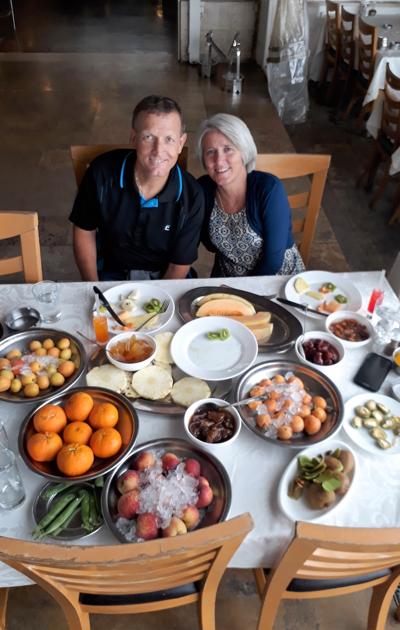
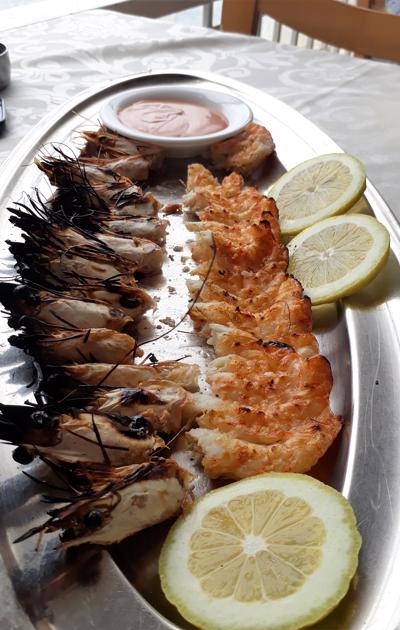
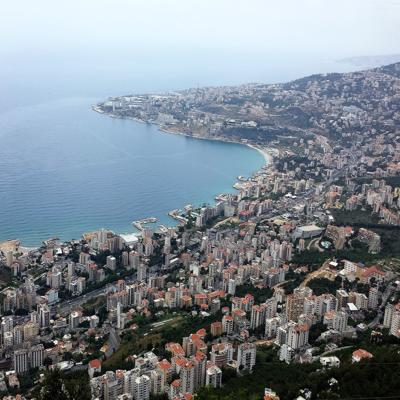
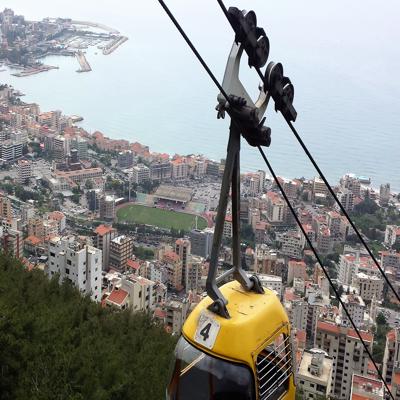
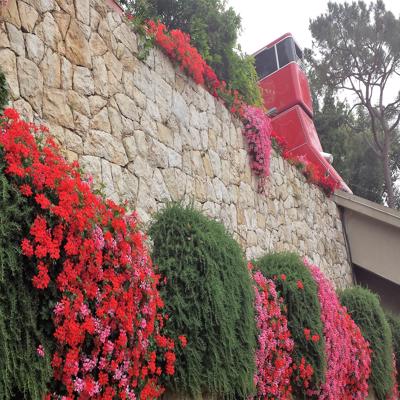
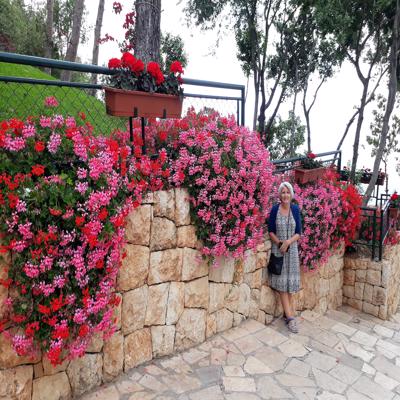
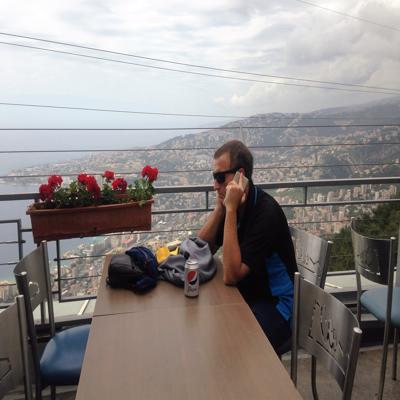
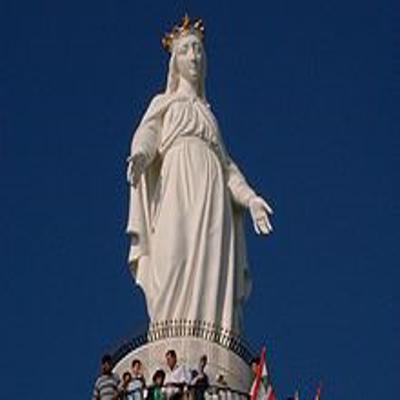
Khaled drove us to Harissa which is 27km north of Beirut. We took a gondola lift 650m above sea level to the Lady of Lebanon. She was erected in 1908 and is one of the most important shrines in the world honoring the Virgin Mary. She is a pretty impressive 15 ton, 8m lady that overlooks Lebanon with stunning views of the city and coastline. Again, we saw the couple from Dubai. We walked down the winding stairs and admired the beautiful flowers planted everywhere. Troy had to take a call for work so we found a spot with a view and plopped down for a bit.
After we were returned to the hotel, we took a stroll along the Beirut Cor-niche. It is a great place if you like to people watch. The city is full of refugees selling gum or offering to shine your shoes. Anything to make money. We watched down by the water some men swimming and possibly bathing. We thought they might also be refugees. It did not look like a safe place to get in the water. We walked to the very end to grab some dessert and watch another sunset. We were still too full from lunch, but there is always room for dessert.
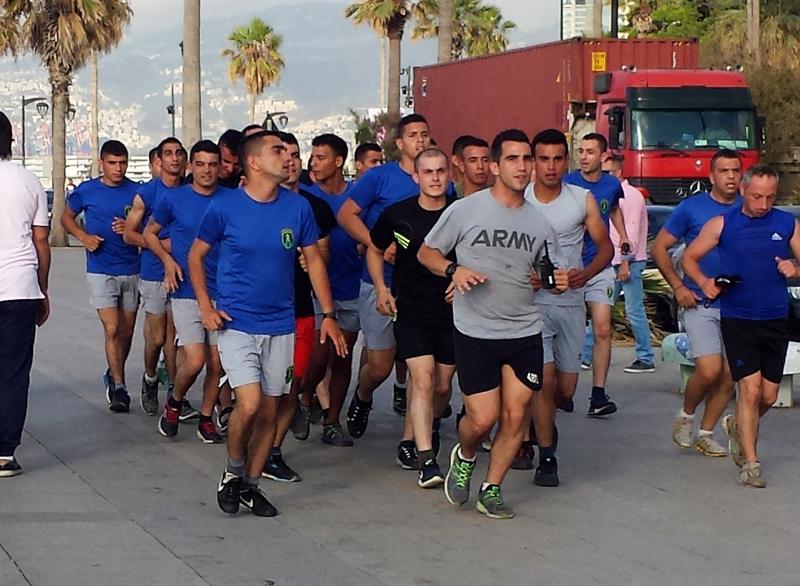

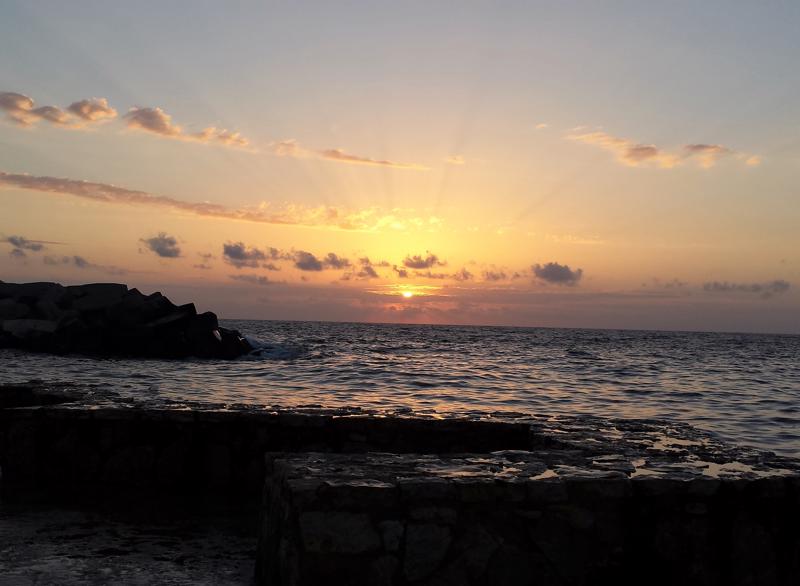
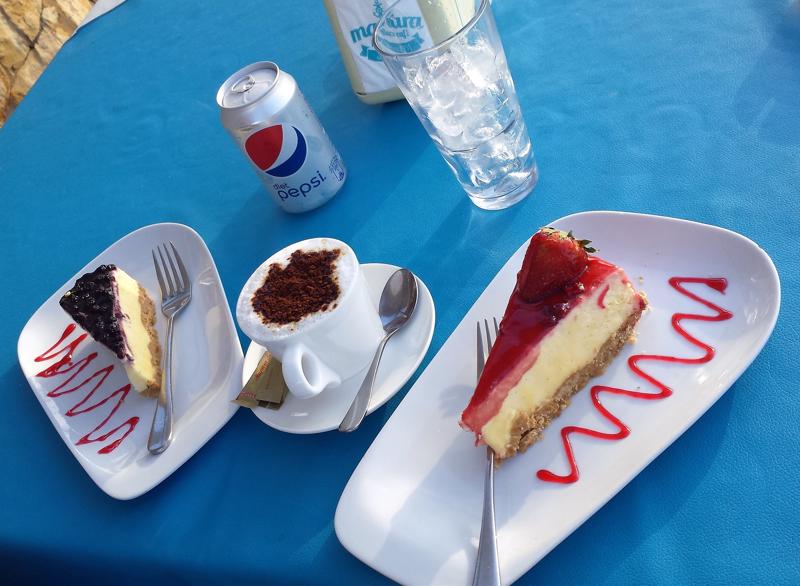
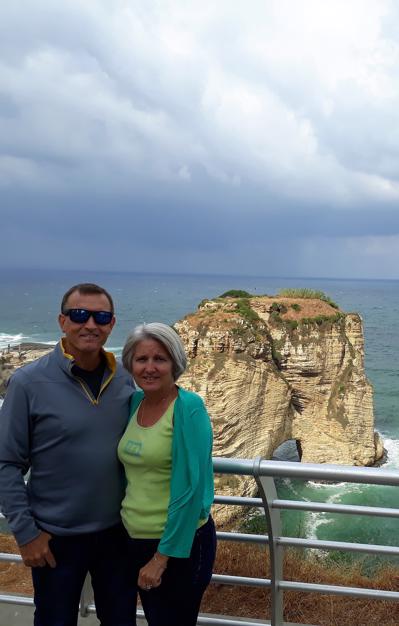
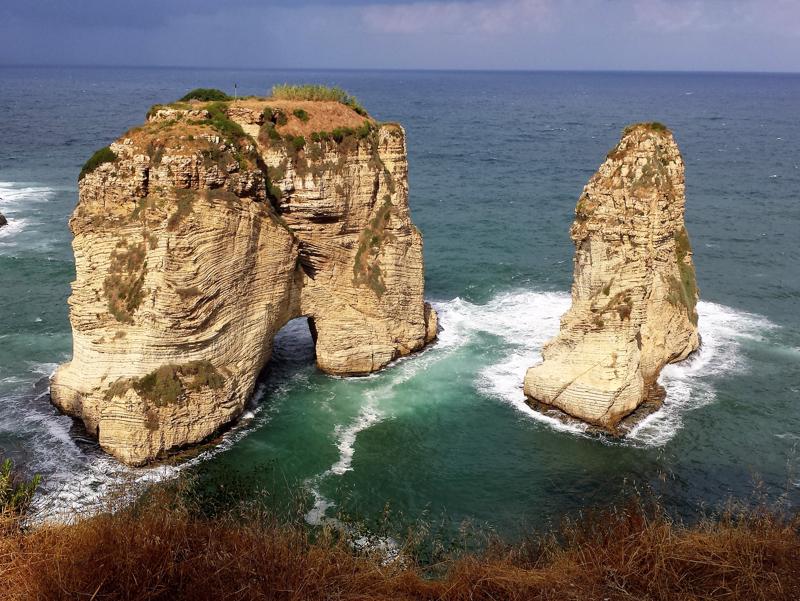
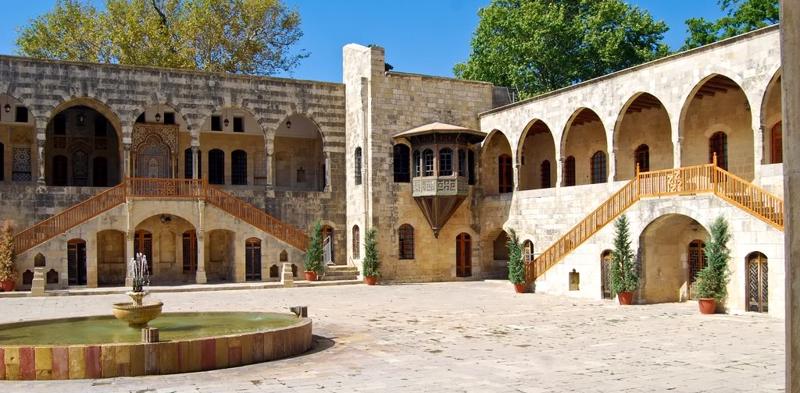
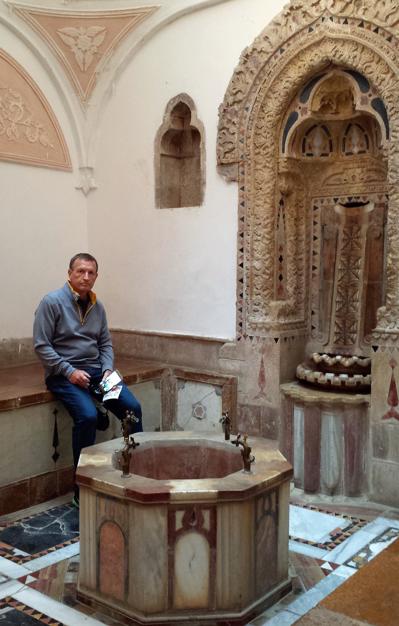
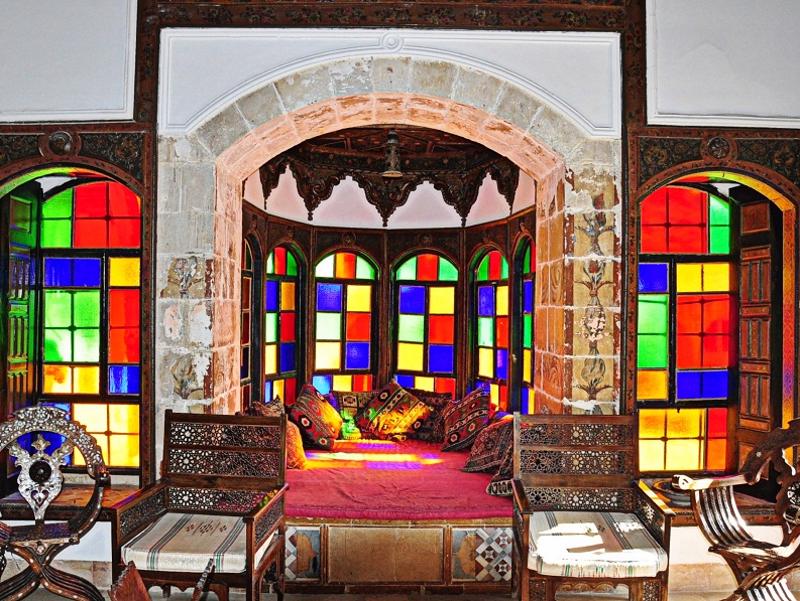
After a nice breakfast at the hotel, Khaled picked us up for the day. It was a little rainy as we drove to the end of the Western tip of Beirut to Pigeon Rock. Nice formations in the water. It would be very pretty at sunset. Khaled told us once a year people climb the rock and jump off into the water. Glad I don't jump off cliffs into water anymore.
We drove 45 km southeast to Beit ed-Dine. This Palace was built in 1788 and it took 30 years to build. It is said that after it was finished they ordered the architect to have his hands cut off so he couldn't duplicate this beauty. Ouch!
In 1943 it became the official summer Presidential residence. It is well preserved even tho it was heavily damaged in the Lebanese Civil War 1975-1990. It is full of historic mosaics, little hidden rooms and old roman baths. We were not able to go into the personal living area, but the rest was open. We pretty much had the place to ourselves except for a few armed guards.
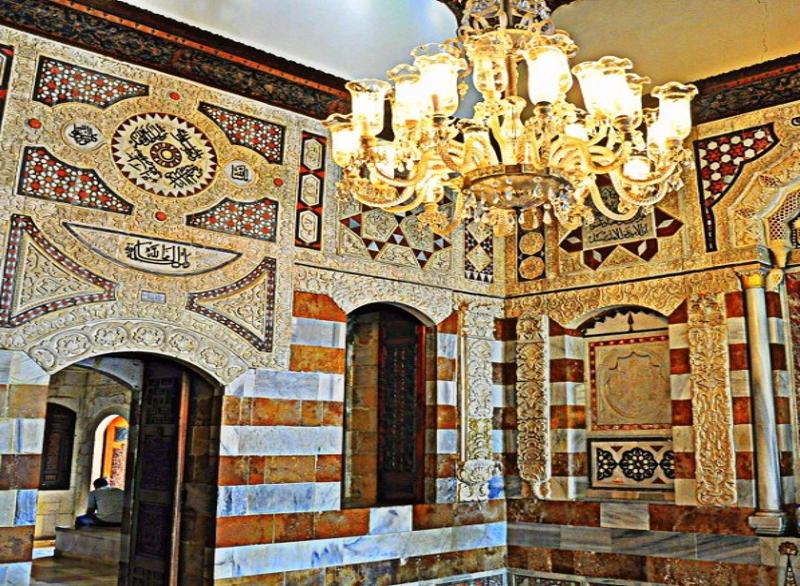
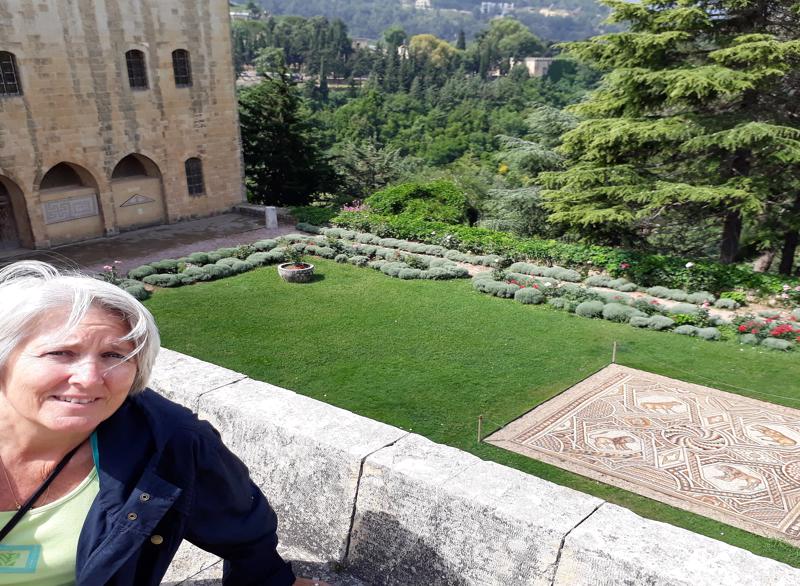
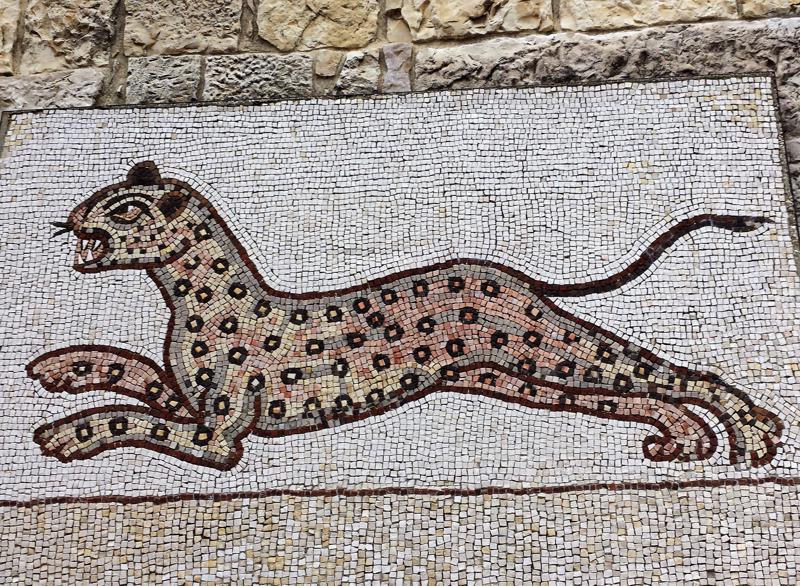
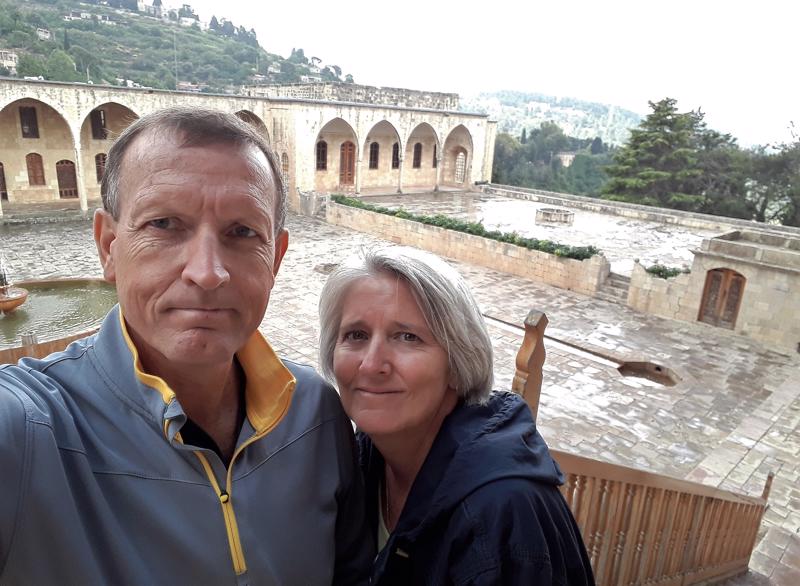
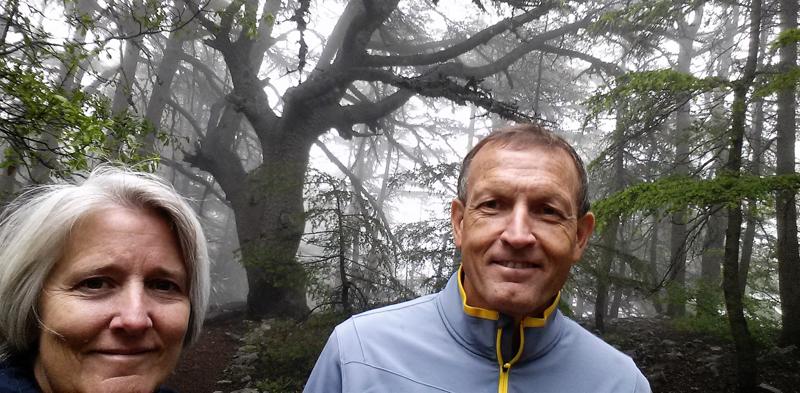
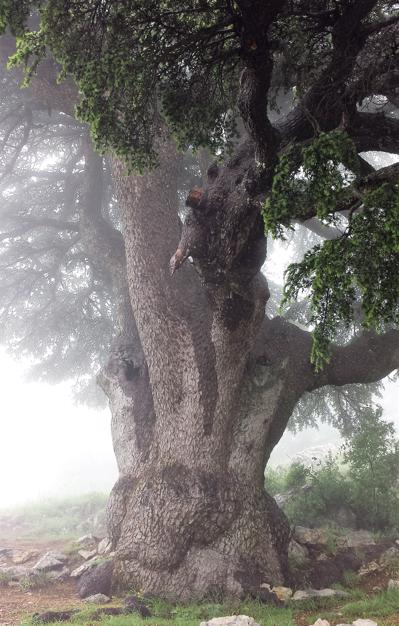
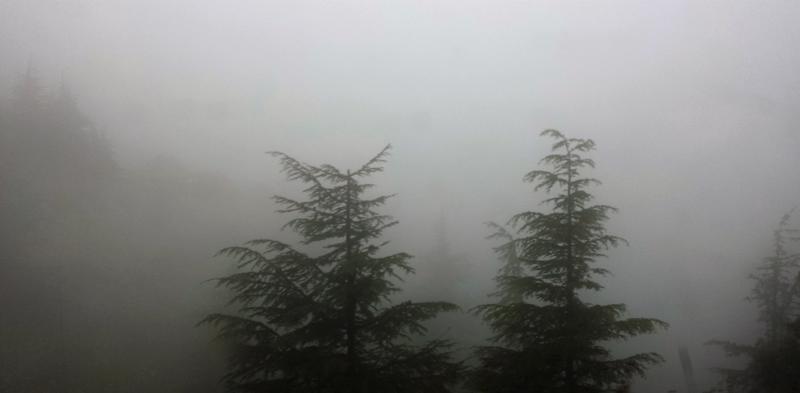
The drive up to the Cedars was interesting. The rain had stopped, but the fog set in. The altitude was 2000m and there were some winding roads. I was thankful there were not a lot of other visitors. Four trees in the park had reached 35m tall and their trunks were 12-14m. One tree was 800 years old. Cedars were prized wood by the Egyptians for ship building. It is the symbol of Lebanon and is on their flag. In the bible, Solomon used cedar for the temple in Jerusalem. We were let off to walk into the Forrest on a path by ourselves. This would make a perfect location shoot for a scary movie.
Next we drove to the city of Sidon to see the Sea Castle built by the crusaders as a fortress of the Holy Land. It was built in the 13th century and has been damaged by wars and earthquakes. The island it sits on served as a shelter from inside attacks on the city.
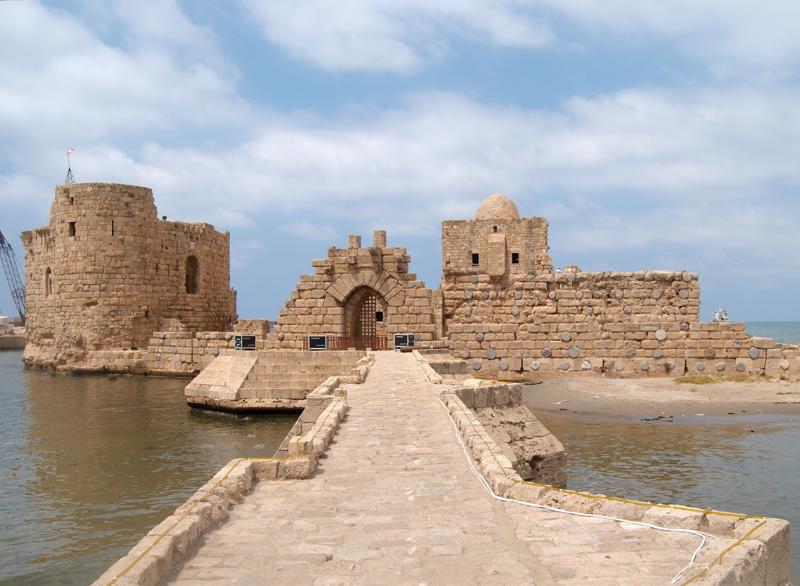
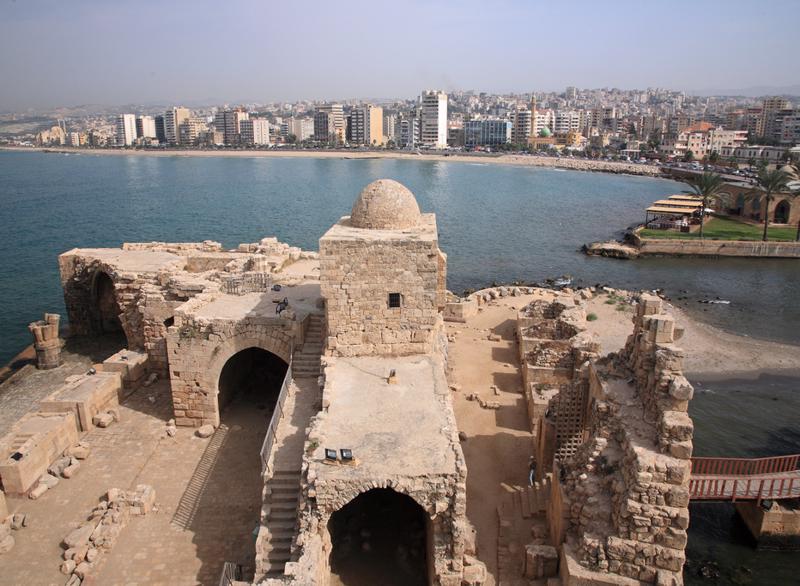
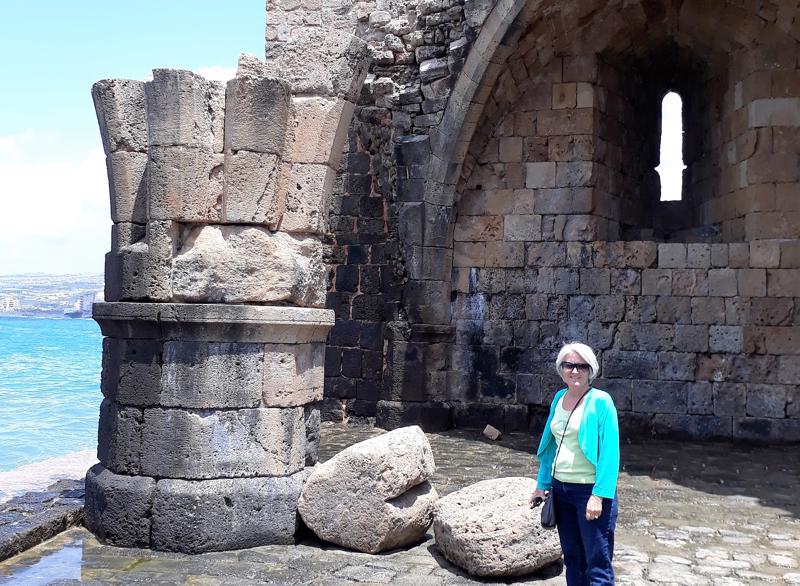
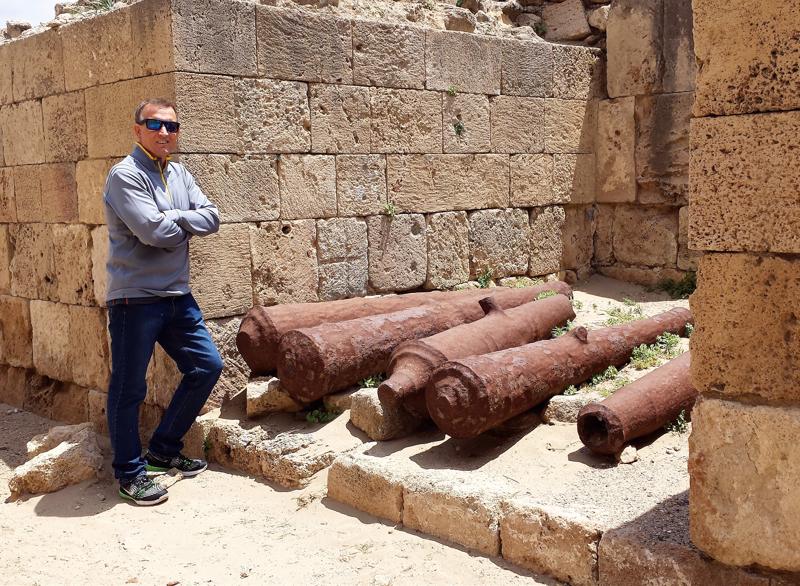
After lunch we took a stroll through the back alleys of Sidon. We love to see all the unique ways of life in different cultures. The deeper into the alleyways you go, the more interesting things you see.
Not quite sure what they were selling in the Pepsi bottles that was orange, but it wasn't Pepsi.
I am sure the wiring is up to code on this building and they never have power outages. My question is, "Do they ever take down the old wires or just add to it?"
They had one cute shop that was full of bird houses and little finches in them. It was right next to the chickens waiting to be someones next meal.
All along the streets there were open meat markets and I wonder if they have any regulations at all.
In the evening they were having a Yacht Club event by Zaitunay Bay. We walked over and looked at all the little shops set up and also past the very famous Saint George Hotel. It was just the shell and hoping to be rebuilt someday.
Also, at this time, President Trump made his first international trip to Saudi Arabia.
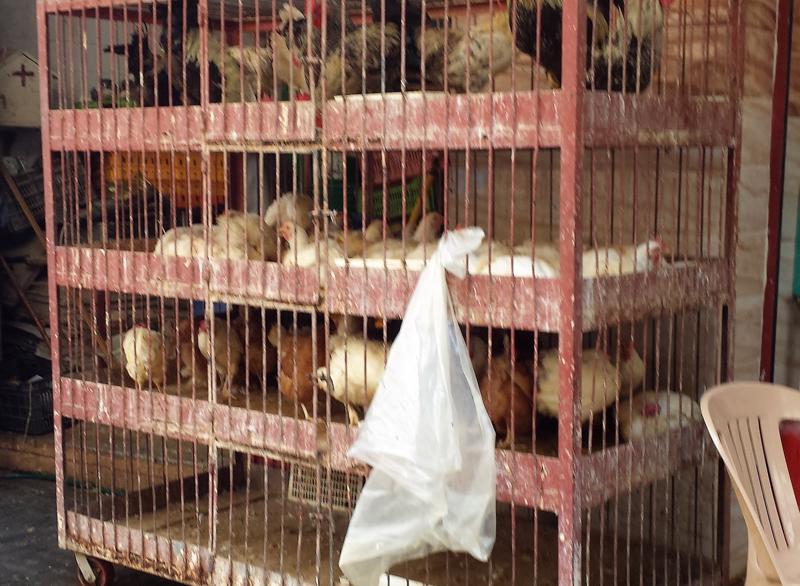
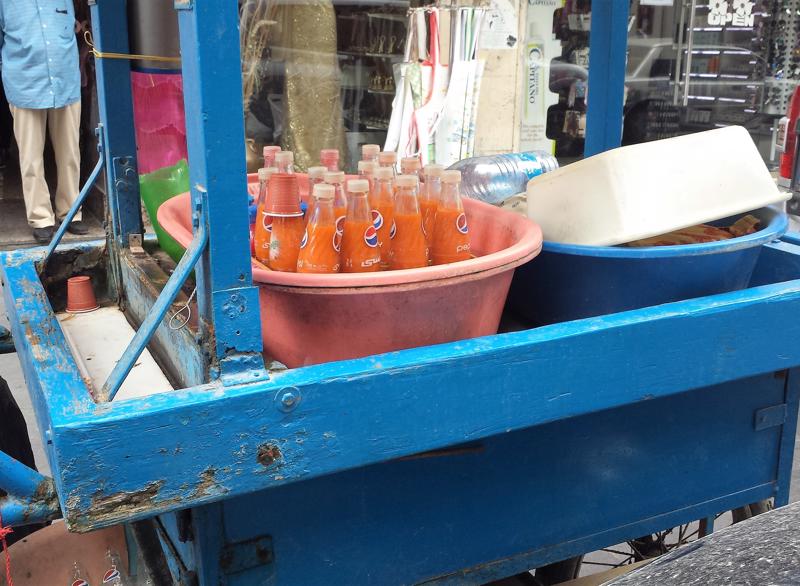
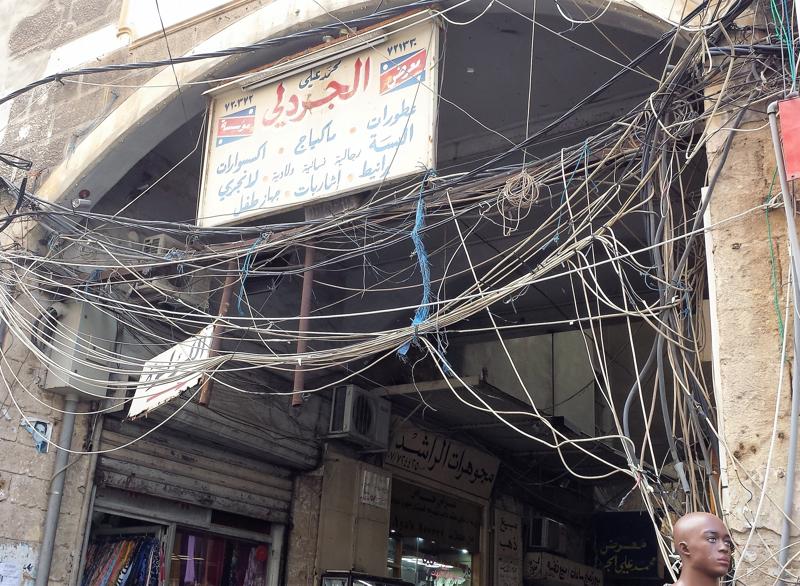
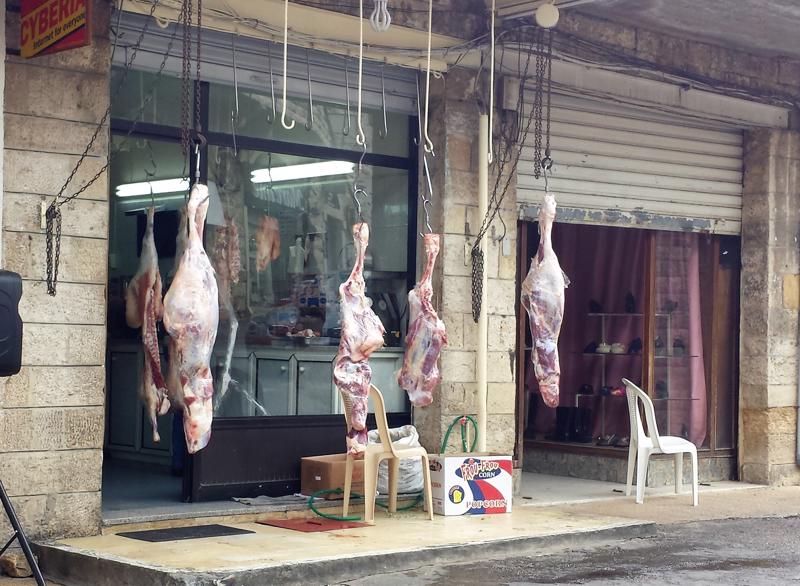
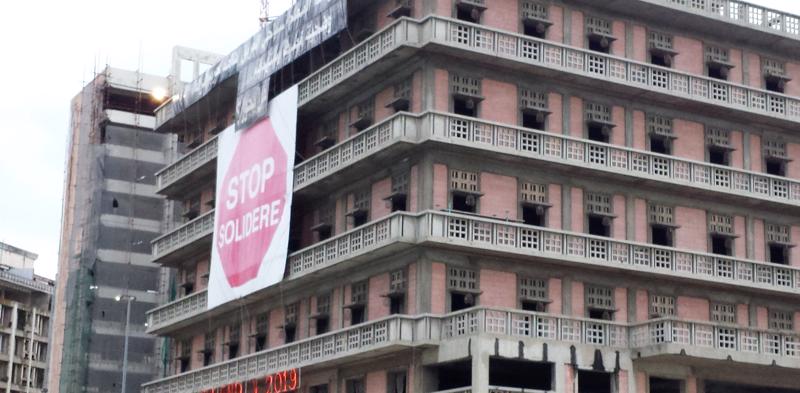
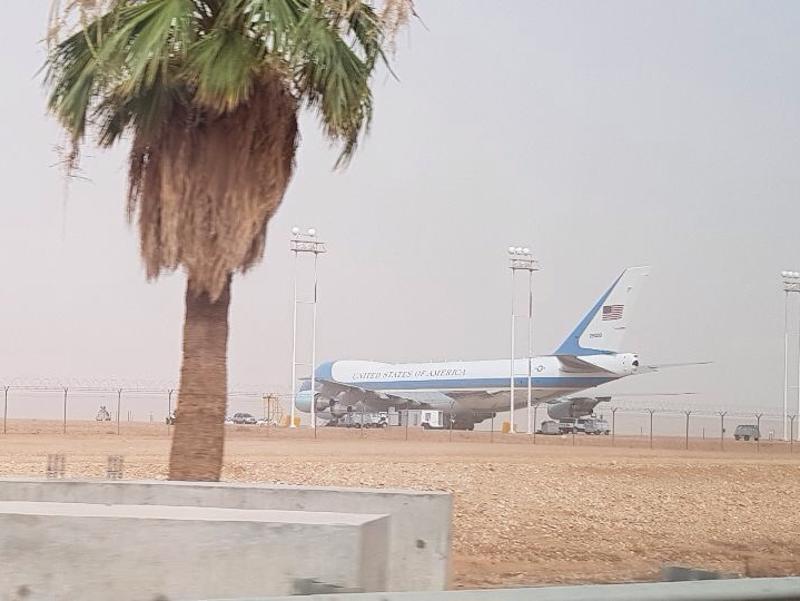
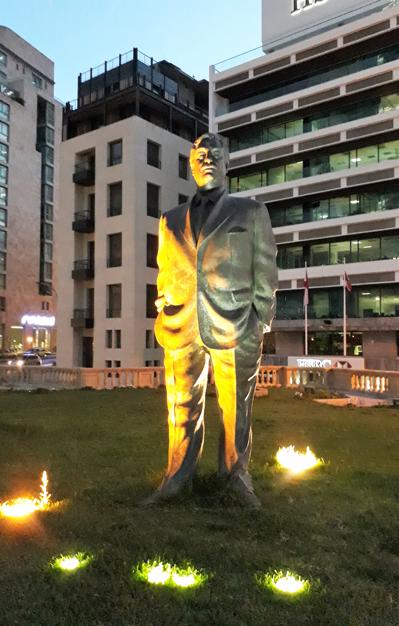
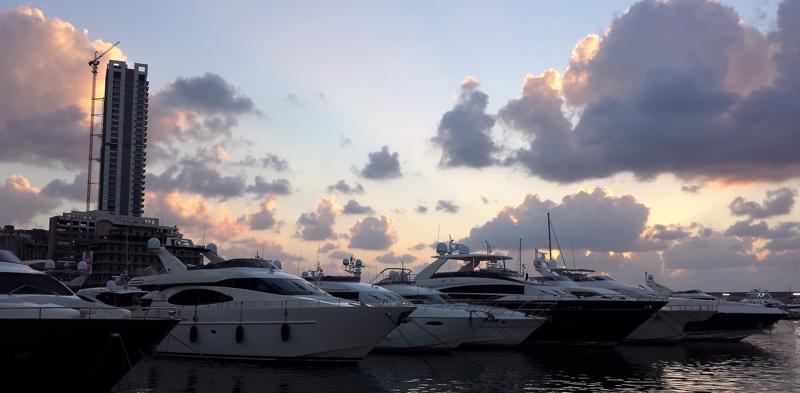
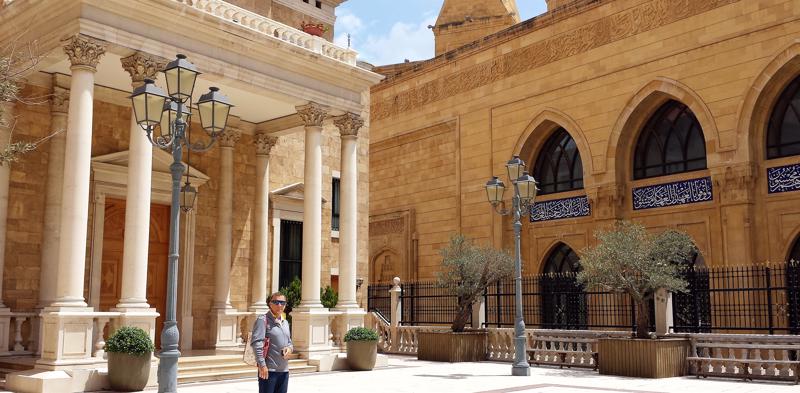
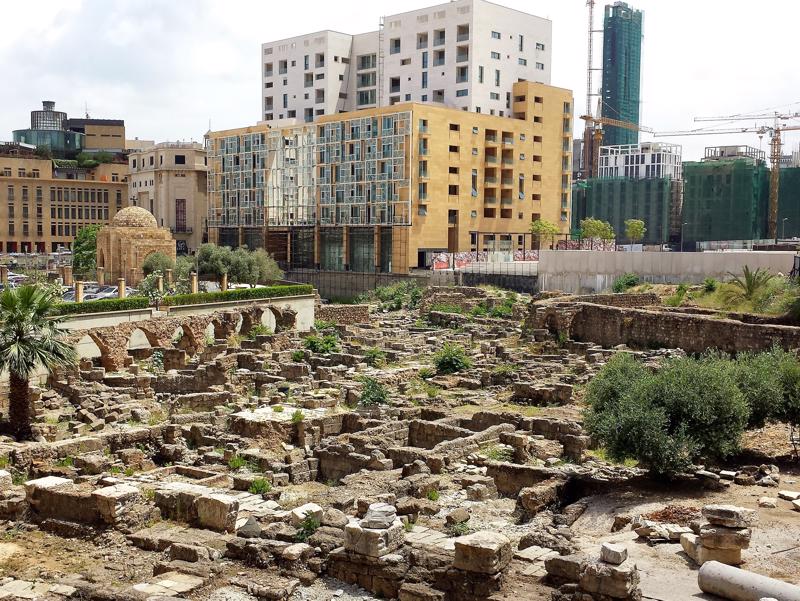
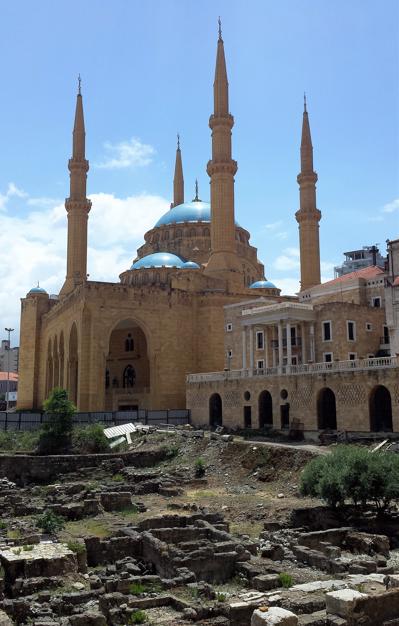
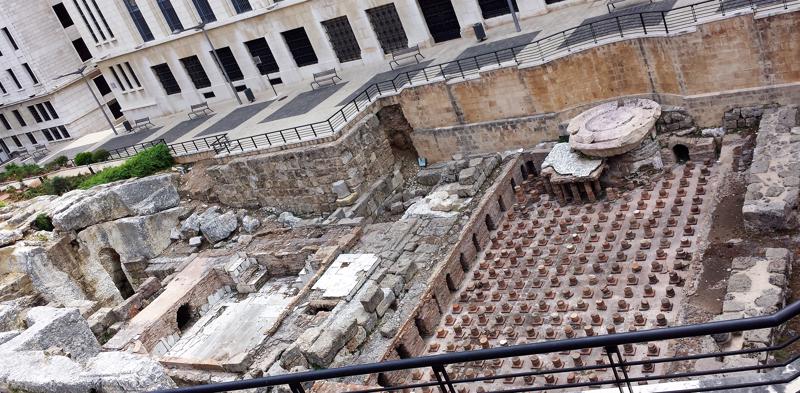
The next day we went into the city center. You are not allowed to drive in and it is heavily guarded because of the government buildings nearby. There are ancient Roman Baths right next to modern buildings. There are Mosques right next to Christian Churches. There are children playing right next to armed guards. We passed by a church that was celebrating a first communion. At another church we went into a museum with a partially excavated church underneath. It was peaceful to hear all the bells chiming at noon.
After this we packed up and transferred to a different hotel.
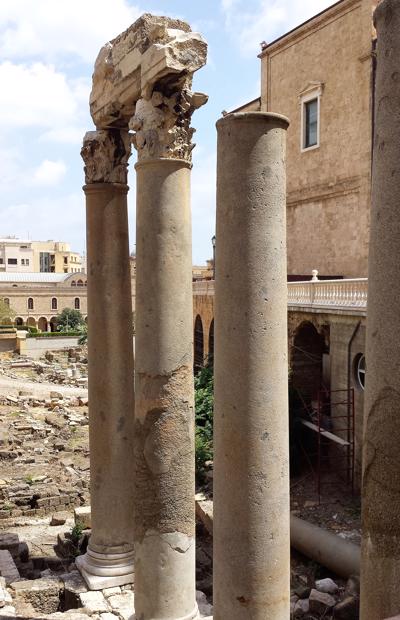
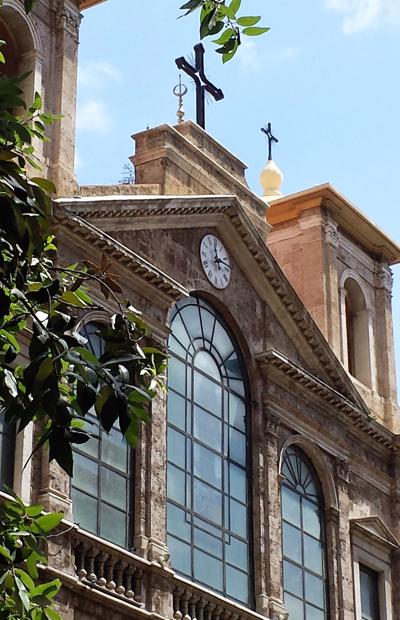
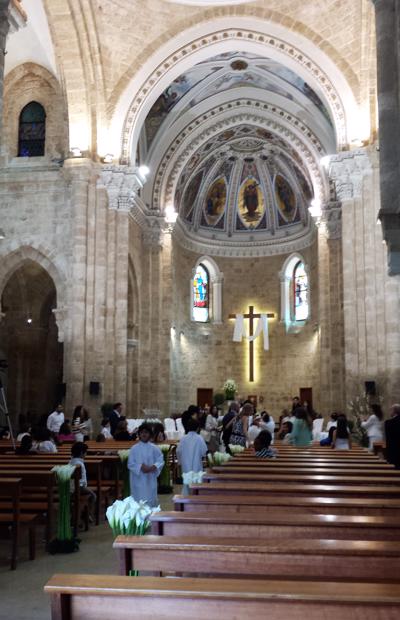
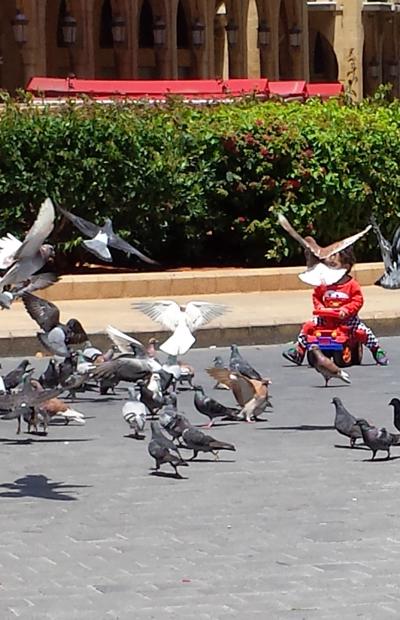
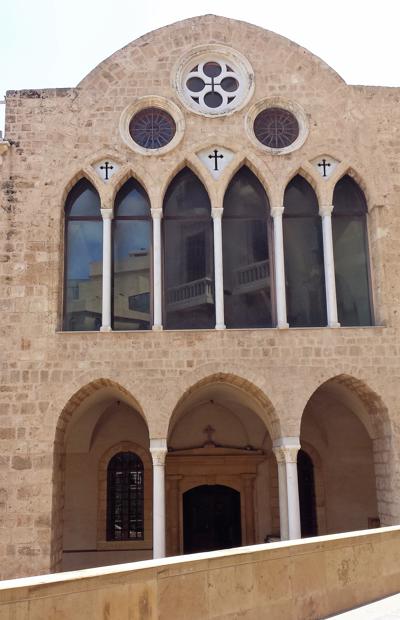
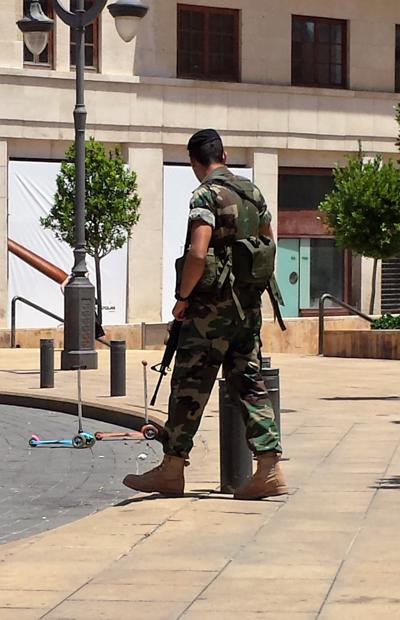
The Le Royal proved to be an amazing place. Great views, great food and very pampered. The first night we had their seafood buffet. Everything was delicious and we ate way too much.
There was a 1st communion celebration going on at the same time. They really know how to celebrate here. They had a little marching band, professional photographer, AND the seafood buffet. They even had a table set up with party favors for each guest. In each box was a chocolate scroll with Arabic writing, a statue of Jesus and a rosary. The women were dressed to impress. WOW!
The next few days Troy went into work during the day and had dinner meetings at night. On the second evening, I was getting concerned about 11pm. I messaged him to see if everything was ok. They like to eat late here and make it last awhile. He got in around 12:30.
I had pretty much seen everything in Beirut that I wanted to so I hung around the hotel for a few days. There was a man training homing pigeons on a hill below our window. He would exercise them right around sunset. Very fun to watch!
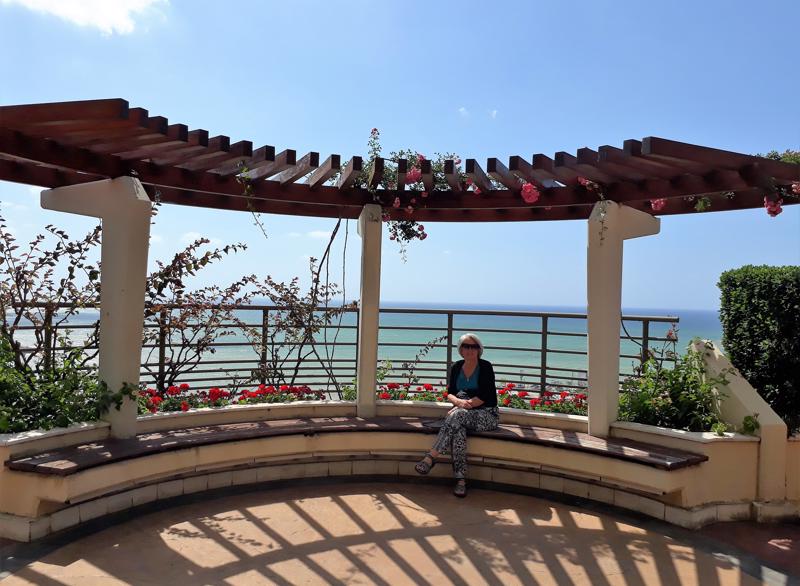
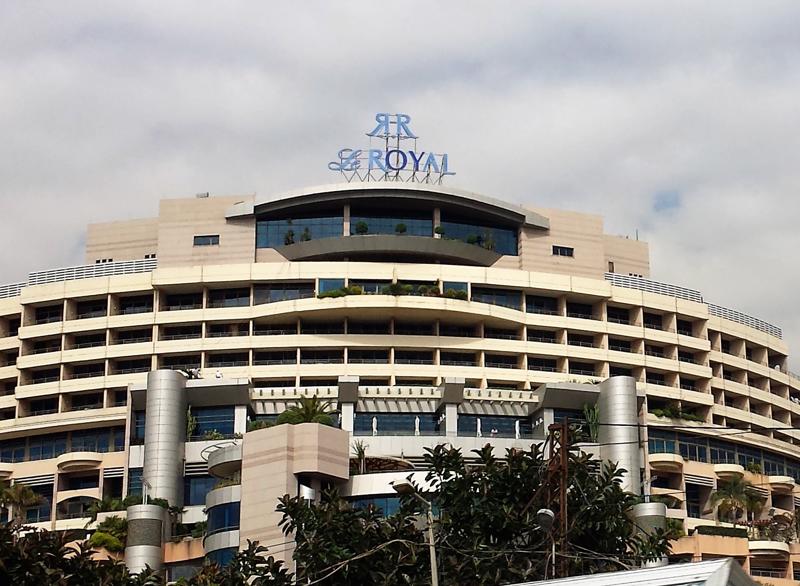
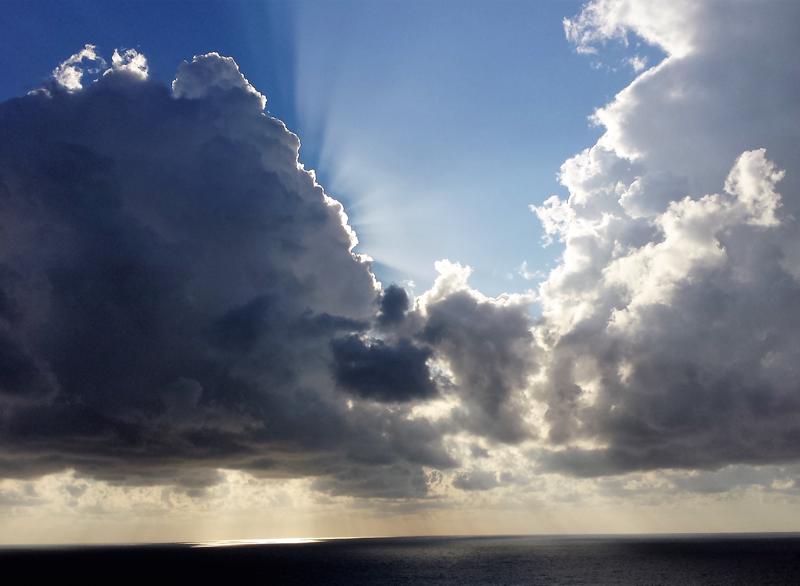
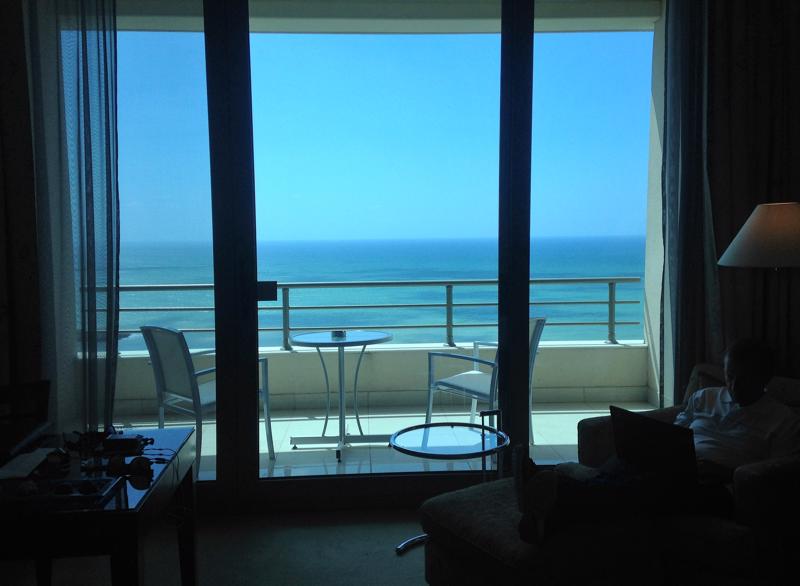
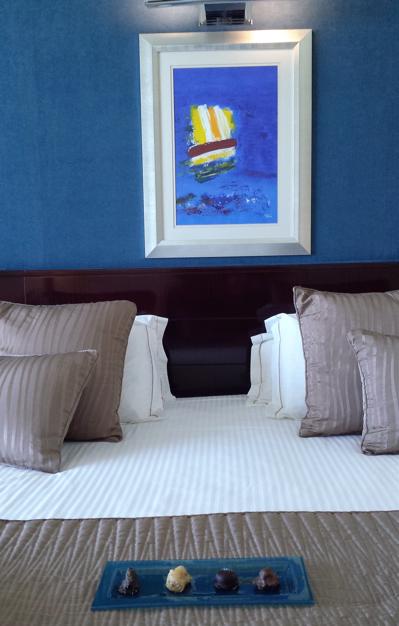
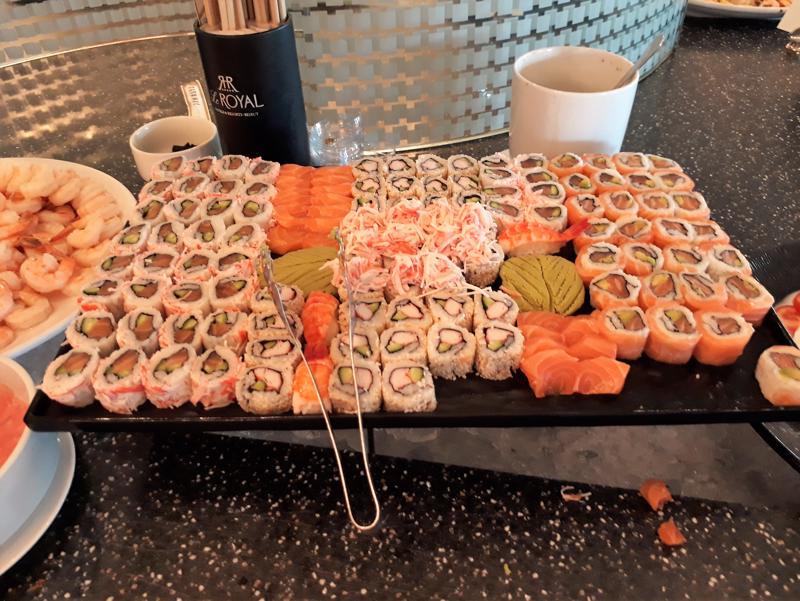
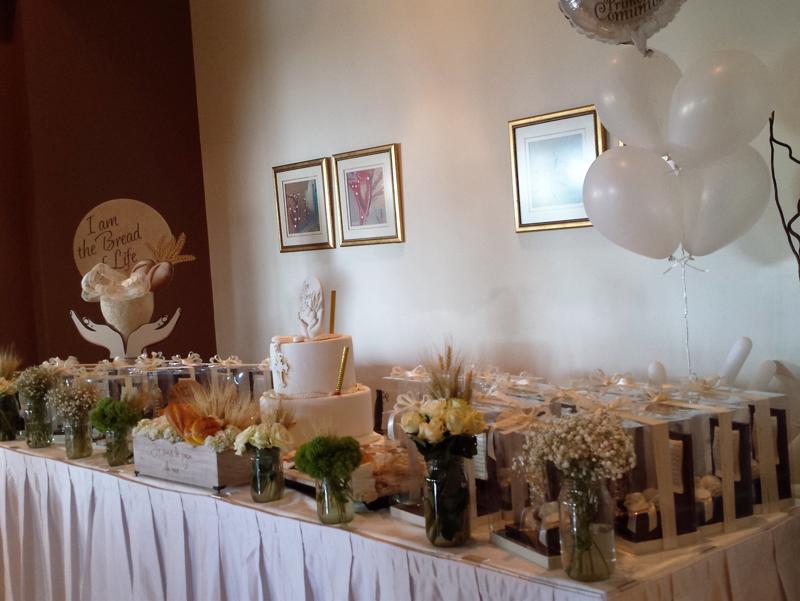
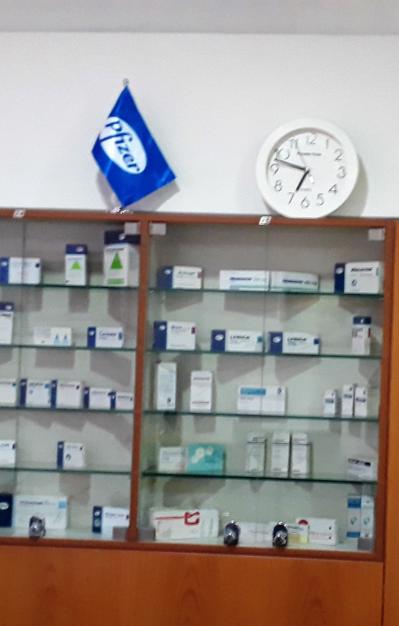
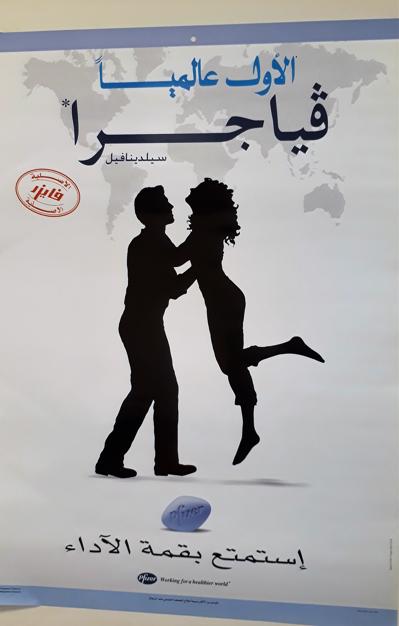
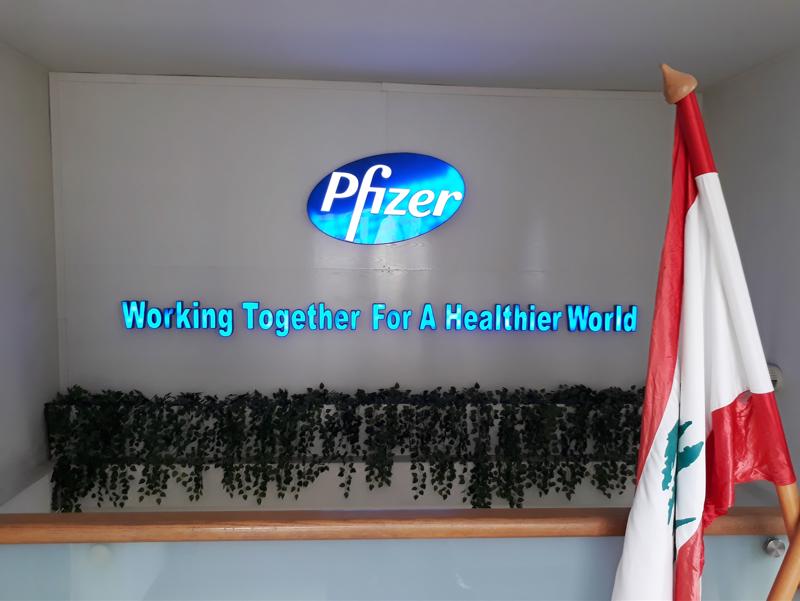
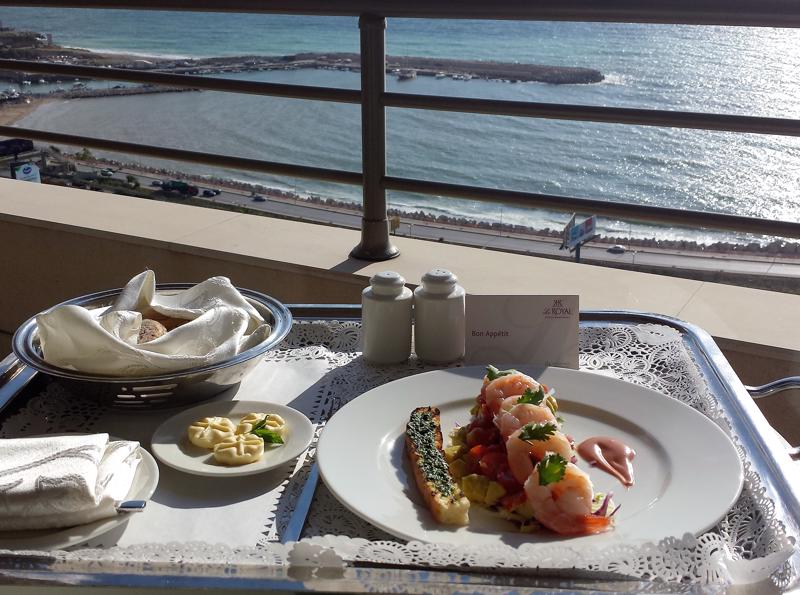

1.
Bringing Workers To Church
2.
RAK Church Plant
3.
Question and Answer Time
4.
Updates From Nebraska
5.
Does Working Include Chocolate?
6.
Play & Work in Beirut
7.
Dublin, Ireland
8.
Galway, Ireland
9.
Killarney, Ireland
10.
Trains, Ferries & Automobiles
11.
London, England
12.
Winsor, Wimbledon & Aladin
13.
Ramadan Kareem
14.
Summer in Dubai
15.
Venice
16.
Florence
17.
Home Sweet Home
18.
New York
19.
Troy's Home Coming, Brennan Reunion & Birthday Celebration
20.
Grandsons
21.
Davids Deck
22.
Solar Eclipse
23.
Royals Baseball Game
Share your travel adventures like this!
Create your own travel blog in one step
Share with friends and family to follow your journey
Easy set up, no technical knowledge needed and unlimited storage!